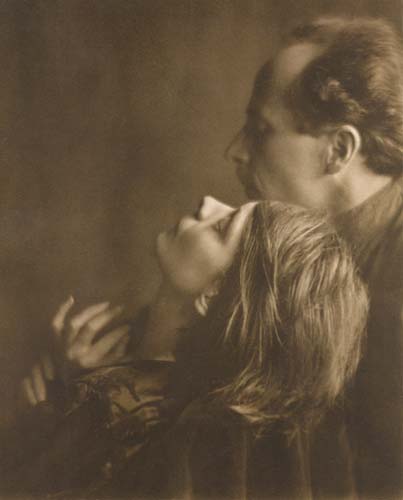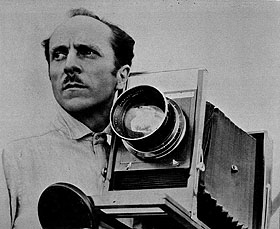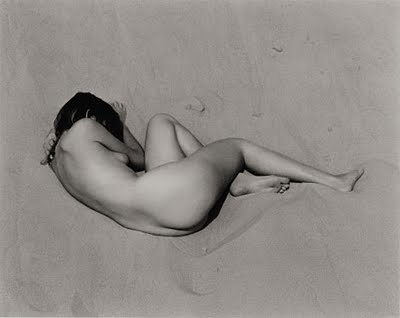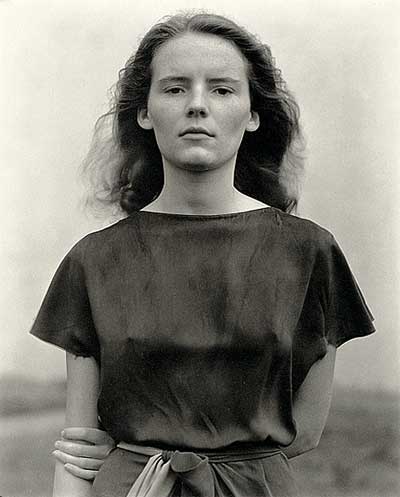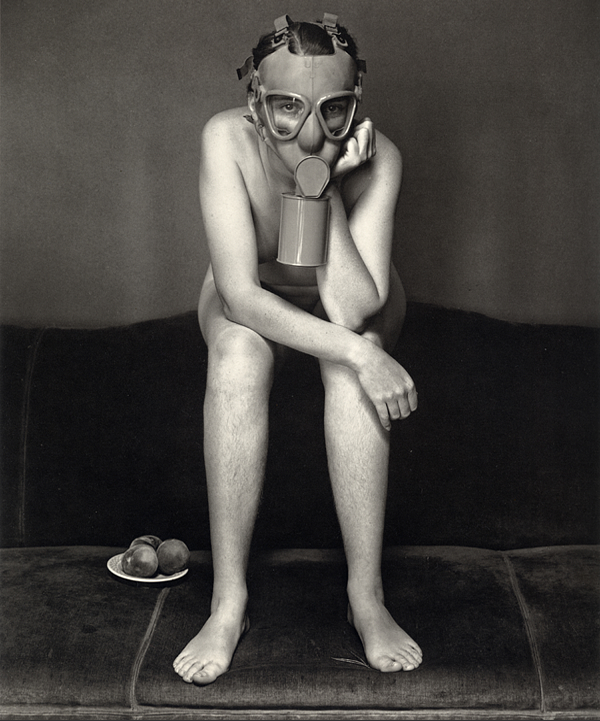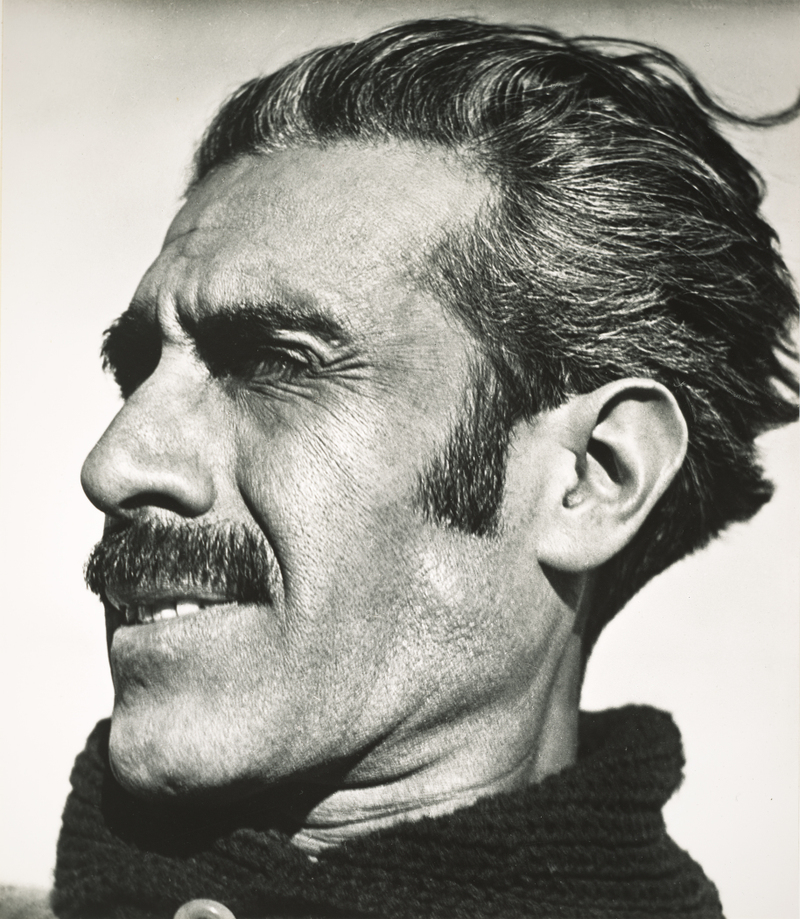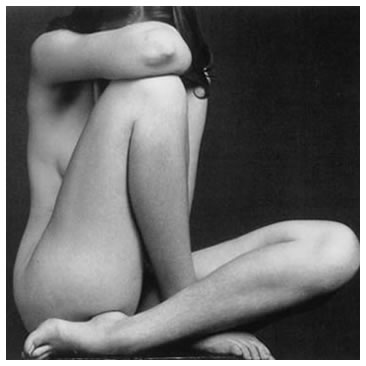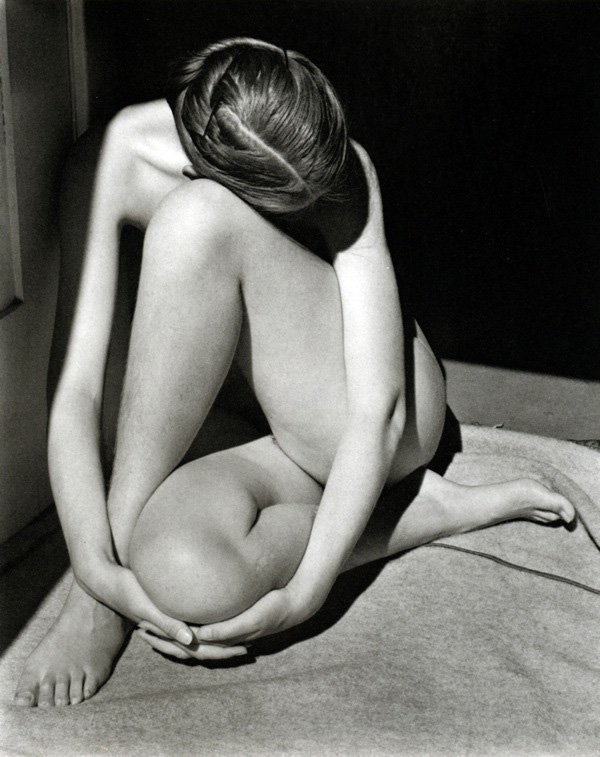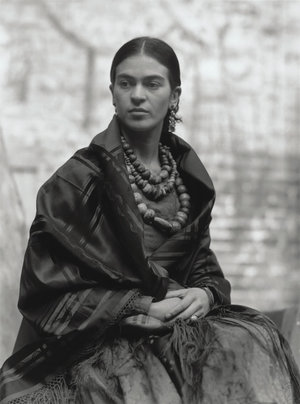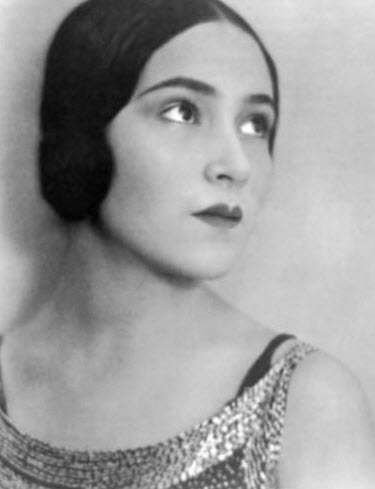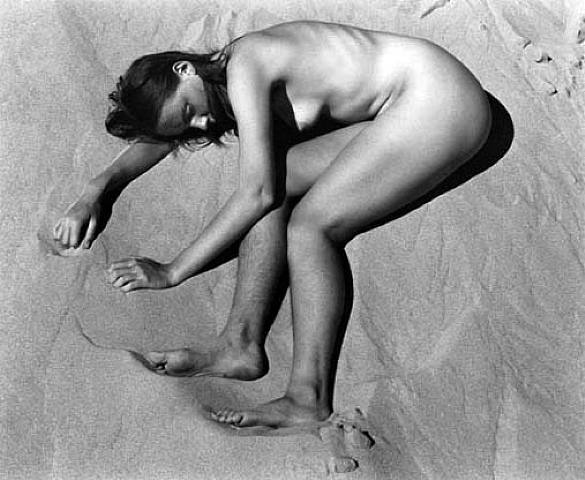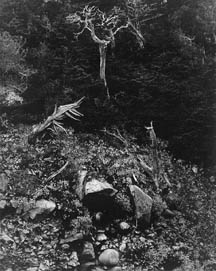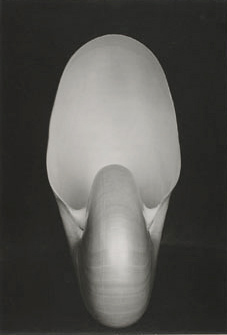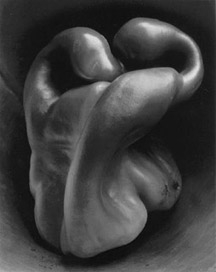<Back to Index>
- Physicist Joseph Stefan, 1835
- Photographer Edward Henry Weston, 1886
- Admiral of the Dutch Navy Michiel Adriaenszoon de Ruyter, 1607
PAGE SPONSOR
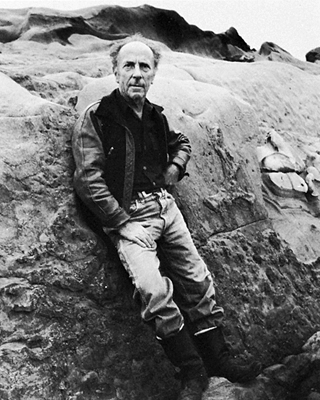
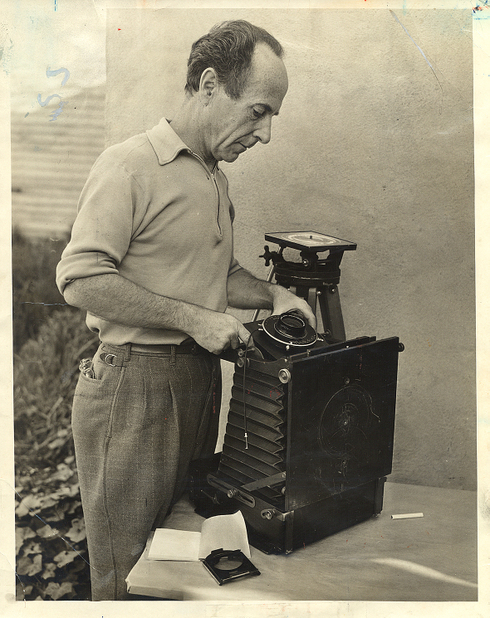
Edward Henry Weston (March 24, 1886 – January 1, 1958) was a 20th century American photographer. He has been called "one of the most innovative and influential American photographers…" and "one of the masters of 20th century photography."
Weston
was born in Chicago and moved to California when he was 21. He knew he
wanted to be a photographer from an early age, and initially his work
was typical of the soft - focus pictorialism that
was popular at the time. Within a few years, however, he abandoned that
style and went on to be one of the foremost champions of highly
detailed photographic images. Over
the course of his forty year career Weston photographed an increasingly
expansive set of subjects, including landscapes, still lifes, nudes,
portraits, genre scenes and even whimsical parodies. It is said that he
developed a "quintessentially American, and specially Californian,
approach to modern photography" because of his focus on the people and places of the American West. In 1937 Weston was the first photographer to receive a Guggenheim Fellowship,
and over the next two years he produced nearly 1,400 negatives using
his 8 × 10 view camera. Some of his most famous photographs were
taken of the trees and rocks at Point Lobos, California, near where he
lived for many years. In 1947 Weston was diagnosed with Parkinson's disease and
he stopped photographing soon thereafter. He spent the remaining ten
years of his life overseeing the printing of more than 1,000 of his
most famous images. Weston was born in Highland Park, Illinois,
the second child and only son of Edward Burbank Weston, an
obstetrician, and Alice Jeanette Brett, a Shakespearean actress. His
mother died when he was five and he was raised mainly by his sister
Mary, whom he called "May" or "Mazie". She was nine years older than
he, and they developed a very close bond that was one of the few steady relationships in Weston's life. His
father remarried when he was nine, but neither Weston nor his sister
got along with their new stepmother and stepbrother. After May was
married and left their home in 1897, Weston's father devoted most of
his time to his new wife and her son. Weston was left on his own much
of the time; he stopped going to school and withdrew into his own room in their large home. As a present for his 16th birthday Weston's father gave him his first camera,
a Kodak Bull's - Eye #2, which was a simple box camera. He took it on
vacation in the Midwest, and by the time he returned home his interest
in photography was enough to lead him to purchase a used 5 ×
7 inch view camera. He began photographing in Chicago parks
and a farm owned by his aunt, and developed his own film and prints.
Later he would remember that even at that early age his work showed
strong artistic merit: In
1904 May and her family moved to California, leaving Weston further
isolated in Chicago. He earned a living by taking a job at a local
department store, but he continued to spend most of his free time
taking photos, Within two years he felt confident enough of his
photography that he submitted his work to the magazine Camera and Darkroom, and in the April, 1906, issue they published a full - page reproduction of his picture Spring, Chicago. This is the first known publication of any of his photographs. At
the urging of his sister, Weston left Chicago in the spring of 1906 and
moved near May's home in Tropico, California (now a neighborhood in Glendale). He decided to stay there and pursue a career in photography, but he soon realized he needed more professional training. A year later he moved to Effingham, Illinois, in order to enroll in the Illinois School of Photography.
They taught a nine month course, but Weston finished all of the class
work in six months. The school refused to give him a diploma unless he
paid for the full nine months; Weston refused and instead moved back to
California in the spring of 1908. He
briefly worked at the photography studio of George Steckel in Los
Angeles, as a negative retoucher. Within a few months he moved to the
more established studio of Louis Mojonier. For the next several years
he learned the techniques and business of operating a photography
studio under Mojonier's direction. Sometime
in the summer of 1908 Weston was introduced to his sister's best
friend, Flora May Chandler. She was a grade school teacher, seven years
older than Weston and second cousin to Harry Chandler, who at that time was described as the head of "the single most powerful family in Southern California.". Chandler
had inherited some money when her father died, and although she was not
as wealthy as her cousins, Weston recognized that she had enough money
to allow him to start working full time as a photographer. On
January 30, 1909, Weston and Chandler married in a simple ceremony. The
first of their four sons, Edward Chandler Weston (1910 – 1993), known as
Chandler, was born on April 26, 1910. Named after Weston and his wife,
he later became a portrait photographer and sometimes assistant to his
father. In
1911 Weston opened his own business, called "The Little Studio", in
Tropico. His sister later asked him why he opened his studio in Tropico
rather than in the nearby metropolis of Los Angeles, and he replied
"Sis, I'm going to make my name so famous that it won’t matter where I
live." For
the next three years he worked alone in his studio, making portraits of
children and friends. Even at that early stage of his career he was
highly particular about his work; in an interview at that time he said
"[photographic] plates are nothing to me unless I get what I want. I
have used thirty of them at a sitting if I did not secure the effect to
suit me." His
critical eye paid off as he quickly gained more recognition for his
work. He won prizes in national competitions, published several more photographs and wrote articles for magazines such as Photo - Era and American Photography, championing the pictorial style. On December 16, 1911, Weston's second son, Theodore Brett Weston (1911 – 1993), was born. He became a long time artistic collaborator with his father and an important photographer on his own. Sometime in the fall of 1913 Los Angeles photographer Margrethe Mather visited Weston's studio because of his growing reputation, and within a few months they developed an intense relationship. Weston
was a quiet Midwestern transplant to California, and Mather was a part
of the growing bohemian cultural scene in Los Angeles. She was very
outgoing and artistic in a flamboyant way, and her permissive sexual
morals were far different from the conservative Weston at the time -
Mather had been a prostitute and was bisexual with a preference for
women. Mather
presented a stark contrast to Weston's home life; his wife Flora was
described as a "homely, rigid Puritan, and an utterly conventional
woman, with whom he had little in common since he abhorred conventions" ‒ and he found Mather's uninhibited lifestyle irresistible and her photographic vision intriguing. He
asked Mather to be his studio assistant, and for the next decade they
worked closely together, making individual and jointly signed portraits
of such luminaries as Carl Sandburg and Max Eastman.
A joint exhibition of their work in 2001 revealed that during this
period Weston emulated Mather's style and, later, her choice of
subjects. On her own Mather photographed "fans, hands, eggs, melons,
waves, bathroom fixtures, seashells and birds wings, all subjects that
Weston would also explore." A
decade later he described her as "the first important person in my
life, and perhaps even now, though personal contact has gone, the most
important." In
early 1915 Weston began keeping detailed journals he later came to call
his "Daybooks". For the next two decades he recorded his thoughts about
his work, observations about photography, and his interactions with
friends, lovers and family. On December 6, 1916, a third son, Lawrence Neil Weston,
was born. He also followed in the footsteps of his father and became a
well known photographer. It was during this period that Weston first
met photographer Johan Hagemeyer,
whom Weston mentored and lent his studio to from time to time. Later,
Hagemeyer would return the favor by letting Weston use his studio in
Carmel after he returned from Mexico. For the next several years Weston
continued to earn a living by taking portraits in his small studio
which he called "the shack". Meanwhile, Flora was spending all of her time caring for their children. Their fourth son, Cole Weston (1919 – 2003), was born on January 30, 1919, and afterward she rarely had time to leave their home. Over the summer of 1920 Weston met two people who were part of the growing Los Angeles cultural scene: Roubaix de l'Abrie Richey, known as "Robo" and a woman he called his wife, Tina Modotti.
Modotti, who was then known only as a stage and film actress, was never
married to Robo, but they pretended to be for the sake of his family.
Weston and Modotti were immediately attracted to each other, and they
soon became lovers. Richey
knew of Modotti's affair, but he continued to be friends with Weston
and later invited him to come to Mexico and share his studio. The
following year Weston agreed to allow Mather to become an equal partner
in his studio. For several months they took portraits that they signed
with both of their names. This was only time in his long career that
Weston shared credit with another photographer. Sometime
in 1920 he began photographing nude models for the first time. His
first models were his wife Flora and their children, but soon
thereafter he took at least three nude studies of Mather. He followed
these with several more photographs of nude models, the first of dozens
of figure studies he would make of friends and lovers over the next
twenty years. Until
now Weston had kept his relationships with other women a secret from
his wife, but as he began to photograph more nudes Flora became
suspicious about what went on with his models. Chandler recalled that
his mother regularly sent him on "errands" to his father's studio and
asked him to tell her who was there and what they were doing.
One of the first who agreed to model nude for Weston was Modotti. She became his primary model for the next several years. In 1922 he visited his sister May, who had moved to
Middletown, Ohio.
While there he made five or six photographs of the tall smoke stacks at
the nearby Armco steel mill. These images signaled a change in Weston's
photographic style, a transition from the soft - focus pictorialism of
the past to a new, cleaner - edge style. He immediately recognized the
change and later recorded it in his notes: "The Middletown visit was
something to remember… most of all in importance was my photographing of
'Armco'… That day I made great photographs, even Stieglitz thought they
were important!" At that time New York City was the cultural center for photography as an art form in America, and Alfred Stieglitz was the most influential figure in photography. Weston
badly wanted to go to New York to meet with him, but he did not have
enough money to make the trip. His brother - in - law gave him enough
money
to continue on from Middletown to New York City, and he spent most of
October and early November there. While there he met artist Charles Sheeler, photographers Clarence H. White, Gertrude Kasebier and
finally, Stieglitz. Weston wrote that Stieglitz told him, "Your work
and attitude reassures me. You have shown me at least several prints
which have given me a great deal of joy. And I can seldom say that of
photographs." Soon after Weston returned from New York, Robo moved to Mexico and set up a studio there to create batiks.
Within a short while he had arranged for a joint exhibition of his work
and of photographs by Weston, Mather and a few others. In early 1923
Modotti left by train to be with Robo in Mexico, but he contracted smallpox and
died shortly before she arrived. Modotti was grief stricken, but within
a few weeks she felt well enough that she decided to stay and carry out
the exhibition that Robo had planned. The show was a success, and, due
in no small part to his nude studies of Modotti, it firmly established
Weston's artistic reputation in Mexico. After
the show closed Modotti returned to California, and Weston and she made
plans to return to Mexico together. He wanted to spend a couple of
months there photographing and promoting his work, and, conveniently,
he could travel under the pretense of Modotti being his assistant and
translator. The
week before he left for Mexico, Weston briefly reunited with Mather and
took several nudes of her lying in the sand at Redondo Beach. These
images were very different from his previous nude studies - sharply
focused and showing her entire body in relation to the natural setting.
They have been called the artistic prototypes for the famous nudes of
Charis Wilson he would take more than a decade later.
On
July 30, 1923, Weston, his son Chandler, and Modotti left on a steamer
for the extended trip to Mexico. His wife, Flora, and their other three
sons waved goodbye to them at the dock. It's unknown what Flora
understood or thought about the relationship between Weston and
Modotti, but she is reported to have called out at the dock, "Tina,
take good care of my boys." They
arrived in Mexico City on August 11 and rented a large hacienda outside
of the city. Within a month he had arranged for an exhibition of his
work at the Aztec Land Gallery, and on October 17 the show opened to
glowing press reviews. He was particularly proud of a review by Marius de Zayas that said "Photography is beginning to be photography, for until now it has only been art." The
different culture and scenery in Mexico forced Weston to look at things
in new ways. He became more responsive to what was in front of him, and
he turned his camera on everyday objects like toys, doorways and
bathroom fixtures. He also made several intimate nudes and portraits of
Modotti. He wrote in his Daybooks: Weston
continued to photograph the people and things around him, and his
reputation in Mexico increased the longer he stayed. He had a second
exhibition at the Aztec Land Galley in 1924, and he had a steady stream
of local socialites asking him to take their portraits. At the same
time, Weston began to miss his other sons back in the U.S. As with many
of his actions, though, it was a woman who motivated him most. He had
recently corresponded with a woman he had known for several years named
Miriam Learner, and as her letters became more passionate he longed to
see her again. He
and Chandler returned to San Francisco at the end of 1924, and the next
month he set up a studio with Hagemeyer. Weston seemed to be struggling
with his past and his future during this period. He burned all of his
pre-Mexico journals, as though trying to erase the past, and started a
new series of nudes with Lerner and with his son Neil. He wrote that
these images were "the start of a new period in my approach and
attitude towards photography." His
new relationship with Lerner did not last long, and in August 1925 he
returned to Mexico, this time with his son Brett. Modotti had arranged
a joint show of their photographs, and it opened the week he returned.
He received new critical acclaim, and six of his prints were purchased
for the State Museum. For the next several months he concentrated once
again on photographing folk art, toys and local scenes. One of his
strongest images of this period is of three black clay pots that art
historian Rene d'Harnoncourt described as "the beginning of a new art." In
May 1926 Weston signed a contract with writer Anita Brenner for $1,000
to make photographs for a book she was writing about Mexican folk art.
In June he, Modotti and Brett started traveling around the country in
search of lesser known native arts and crafts. His contract required
him to give Brenner three finished prints from 400 8x10 negatives, and
it took him until November of that year to complete the work. During
their travels, Brett received a crash course in photography from his
father, and he made more than two dozen prints that his father judged
to be of exceptional quality. By
the time they returned from their trip, Weston and Modotti's
relationship had crumbled, and within less than two weeks he and Brett
returned to California. He never traveled to Mexico again. Weston
initially returned to his old studio in Glendale (previously called
Tropico). He quickly arranged a dual exhibition at University of
California of the photographs that he and Brett had made the year
before. The father showed one hundred prints and the son showed twenty.
Brett was only 15 years old at the time. In
February he started a new series of nudes, this time of dancer Bertha
Wardell. One of this series, of her kneeling body cut off at the
shoulders, is one of Weston's most well known figure studies. At this
same time he met Canadian painter Henrietta Shore,
whom he asked to comment on the photos of Wardell. He was surprised by
her honest critique: "I wish you would not do so many nudes - you are
getting used to them, the subject no longer amazes you ‒ most of these are just nudes."
He
asked to look at her work and was intrigued by her large paintings of
sea shells He borrowed several shells from her, thinking he might find
some inspiration for a new still life series. Over the next few weeks
he explored many different kinds of shell and background combinations -
in his log of photographs taken for 1927 he listed fourteen negatives
of shells. One of these, simply called Nautilus, 1927" (sometimes called Shell, 1927), became one of his most famous images. Modotti called the image "mystical and erotic," and when she showed it to Rene d'Harnoncourt he said he felt "weak at the knees." Weston is known to have made at least twenty - eight prints of this image, more than he had made of any other shell image. In September of that year Weston had a major exhibition at Palace of the Legion of Honor. At the open of the show he met fellow photographer Willard Van Dyke, who later introduced Weston to Ansel Adams. In
May, 1928, Weston and Brett made a brief but important trip to the
Mojave Desert. It was there that he first explored and photographed landscapes as an art form. He
found the stark rock forms and empty spaces to be a visual revelation,
and over a long weekend he took twenty - seven photographs. In his journal he declared "these negatives are the most important I have ever done." Later
that year he and Brett moved to San Francisco, where they lived and
worked in a small studio owned by Hagemeyer. He made portraits to earn
an income, but he longed to get away by himself and get back to his
art. In early 1929 he moved to Hagemeyer's cottage in Carmel, and it
was there that he finally found the solitude and the inspiration that
he was seeking. He placed a sign in studio window that said, "Edward
Weston, Photographer, Unretouched Portraits, Prints for Collectors." He
started making regular trips to nearby Point Lobos, where he would
continue to photograph until the end of his career. It was there that
he learned to fine tune his photographic vision to match the visual
space of his view camera, and the images he took there, of kelp, rocks
and wind blown trees, are among his finest. Looking at his work from
this period, one biographer wrote: In early April, 1929, Weston met photographer Sonya Noskowiak at
a party, and by the end of the month she was living with him. As with
many of his other relationships, she became his model, muse, pupil and
assistant. They would continue to live together for five years. Intrigued
by the many kinds and shapes of kelp he found on the beaches near
Carmel, in 1930 Weston began taking close - ups of vegetables and fruits.
He made a variety of photographs of cabbage, kale, onions, bananas, and
finally, his most iconic image, peppers. In August of that year
Noskowiak brought him several green peppers, and over a four day period
he shot at least thirty different negatives. Of these, Pepper No. 30, is among the all - time masterpieces of photography. Weston
had a series of important one man exhibitions in 1930 - 31. The first was
at Alma Reed's Delphic Studio Gallery in New York, followed closely by a
mounting of the same show at the Denny Watrous Gallery in Carmel. Both
received rave reviews, including a two page article in the New York Times Magazine. These were followed by shows at De Young Museum in San Francisco and the Galerie Jean Naert in Paris. Although
he was succeeding professionally his personal life was very complex.
For most of their marriage, Flora was able to take care of their
children because of an inheritance from her parents. However, the Wall Street Crash of 1929 had
wiped out most of her savings, and Weston felt increased pressure to
help provide more for her and his sons. He described this time as "the
most trying economic period of my life." In 1932, The Art of Edward Weston, the first book devoted exclusively to Weston's work, was published. It was edited by Merle Armitage and dedicated to Alice Rohrer, an admirer and patron of Weston whose $500 donation helped pay for the book to be published. During
the same time a small group of like minded photographers in the San
Francisco area, led by Van Dyke and Ansel Adams, began informally
meeting to discuss their common interest and aesthetics. Inspired by
Weston's show at the De Young Museum the previous year, they approached
the museum with the idea of mounting a group exhibition of their work.
They named themselves Group f/64, and in November, 1932, an exhibition of 80 of their prints opened at the museum. The show was a critical success. In
1933 Weston bought a 4 × 5 Graflex camera, which was much smaller
and lighter than the large view camera he had used for many years. He
began taking close - up nudes of Noskowiak and other models. The smaller
camera allowed him to interact more with his models, while at the same
time the nudes he took during this period began to resemble some of the
contorted root and vegetables he had taken the year before. In early 1934, "a new and important chapter opened" in Weston's life when he met Charis Wilson at
a concert. Even more than with his previous lovers, Weston was
immediately captivated by her beauty and her personality. He wrote: "A
new love came into my life, a most beautiful one, one which will, I
believe, stand the test of time." On
April 22 he photographed her nude for the first time, and they entered
into an intense relationship. He was still living with Noskowiak at
that time, but within two weeks he asked her to move out, declaring
that for him other women were "as inevitable as the tides". Perhaps
because of the intensity of his new relationship, he stopped writing in
his Daybooks at this same time. Six months later he wrote one final
entry, looking back from April 22: In January, 1935 Weston was facing increasing financial difficulties. He closed his studio in Carmel and moved to Santa Monica Canyon, California, where he opened a new studio with Brett. He implored Wilson
to come and live with him, and in August 1935 she finally agreed. While
she had an intense interest in his work, Wilson was the first woman
Weston had lived with since Flora who had no interest in becoming a
photographer. This
allowed Weston to concentrate on her as his muse and model, and in turn
Wilson devoted her time to promoting Weston's art as his assistant and
quasi - agent. Almost
immediately he began taking a new series of nudes with Wilson as the
model. One of the first photographs he took of her, on the balcony of
their home, became one of his most published images (Nude (Charis, Santa Monica)). Soon after they took the first of several trips to Oceano Dunes,
not far from Santa Monica. It was there that Weston made some of his
most daring and intimate photographs of any of his models, capturing
Wilson in completely uninhibited poses in the sand dunes. He exhibited
only one or two of this series in his lifetime, thinking several of the
others were "too erotic" for the general public. Although
his recent work had received critical acclaim, he was not earning
enough income from his artistic images to provide a steady income.
Rather than going back to relying solely on portraiture, he started the
“Edward Weston Print of the Month Club”, offering selections of his
photos for a monthly $5 subscription. Each month subscribers would
receive a new print from Weston, with a limited edition of 40 copies of
each print. Although he created these prints with the same high
standards that he did for his exhibition prints, it is thought that he
never had more than eleven subscribers. At the suggestion of Beaumont Newhall, Weston decided to apply for a Guggenheim Foundation grant (now known as a Guggenheim Fellowship). He wrote a two sentence description about his work, assembled thirty - five of his favorites prints, and sent it in. Afterward Dorothea Lange and
her husband suggested that the application was too brief to be
seriously considered, and Weston resubmitted it with a four page letter
and work plan. He did not mention that Wilson had written the new
application for him. On
March 22, 1937, Weston received notification that he had been awarded a
Guggenheim grant, the first ever given to a photographer. The
award was $2,000 for one year, a significant amount of money at that
time. He was able to further capitalize on the award by arranging to
provide the editor of AAA Westway Magazine with
8 - 10 photos per month for $50 during their travels, with Wilson getting
an additional $15 monthly for photo captions and short narratives. They
purchased a new car and set out on Weston's dream trip to go and
photograph whatever he wanted. Over the next twelve months they made
seventeen trips and covered 16,697 miles according to Wilson's detailed
log. Weston made 1,260 negatives during the trip. The
freedom of this trip with the "love of his life", combined with all of
his sons now reaching the age of adulthood, gave Weston the motivation
to finally divorce his wife. They had been living apart for sixteen
years. Due
to the success of the past year, Weston applied for and received a
second year of Guggenheim support. Although he wanted to do some
additional traveling, he intended to use most of the money to allow him
to print his past year's work. He commissioned Neil to build a small
home in the Carmel Highlands on property owned by Wilson's father. They
named the place "Wildcat Hill" because of the many domestic cats that
soon occupied the grounds. Wilson
set up a writing studio in what was intended to be a small garage
behind the house, and she spent several months writing and editing
stories from their travels. In 1939, Seeing California with Edward Weston was
published, with photographs by Weston and writing by Wilson. Finally
relieved from the financial stresses of the past and inordinately happy
with his work and his relationship, Weston married Wilson in a small
ceremony on April 24. Buoyed by the success of their first book, in 1940 they published California and the West.
The first edition, featuring 96 of Weston's photos with text by Wilson,
sold for $3.95. Over the summer, Weston taught photography at the first
Ansel Adams Workshop at Yosemite National Park. Just as the Guggenheim money was running out, Weston was invited to illustrate a new edition of Walt Whitman's Leaves of Grass. He would receive $1,000 for photographs and $500 travel expenses.
Weston insisted on having artistic control of the images he would take
and insisted that he would not be taking literal illustrations of
Whitman's text. On May 28 he and Wilson began a trip that would cover
20,000 miles through 24 states; he took between 700 and 800 8x10
negatives as well as dozens of Graflex portraits. On December 7, 1941, Pearl Harbor was attacked, and the United States entered World War II.
Weston was near the end of the Whitman trip, and he was deeply affected
by the outbreak of the war. He wrote: "When the war broke out we
scurried home. Charis did not want to scurry. I did." He
spent the first few months of 1942 organizing and printing the
negatives from the Whitman trip. Of the hundred of images he took, forty - nine were selected for publication. Due
to the war, Point Lobos was closed to the public for several years.
Weston continued to work on images centered on Wildcat Hill, including
shots of the many cats that lived there. Weston treated them with the
same serious intent that he applied to all of his other subjects, and
Charis assembled the results into their most unusual publication, The Cats of Wildcat Hill, which was finally published in 1947. The year 1945 marked the beginning of significant changes for Weston. He began to experience the first symptoms of Parkinson's disease, a debilitating ailment that gradually stole his strength and his
ability to photograph. He withdrew from Wilson, who at the same time
began to become more involved in local politics and the Carmel cultural
scene. A strength that originally brought them together - her lack of
interest in becoming a photographer herself - eventually led to their
break-up. She wrote, "My flight from Edward was also partly an escape
from photography, which had taken up so much room in my life for so
many years." While
working on a major retrospective exhibition for the Museum of Modern
Art, he and Wilson separated. Weston returned to Glendale since the
land for their cabin at Wildcat Hill still belonged to Wilson's father.
Within a few months she moved out and arranged to sell the property to
him. In
February, 1946, Weston's major retrospective opened at the Museum of
Modern Art in New York. He and Beaumont Newhall selected 313 prints for
the exhibition, and eventually 250 photographs were displayed along
with 11 negatives. At that time many of his prints were still for sale,
and he sold 97 prints from the exhibit at $25 per print. Later that year, Weston was asked by Dr. George L. Waters of Kodak to produce 8 × 10 Kodachrome transparencies
for their advertising campaign. Weston had never worked in color
before, primarily because he had no means of developing or printing the
more complicated color process. He accepted their offer in no small
part because they offered him $250 per image, the highest amount he
would be paid for any single work in his lifetime. He eventually sold seven color works to Kodak of landscapes and scenery at Point Lobos and nearby Monterey harbor. By
late 1948 he was no longer physically able to use his large view
camera. That year he took his last photographs, at Point Lobos. His
final negative was an image he called, "Rocks and Pebbles, 1948". Although
diminished in his capacity, Weston never stopped being a photographer.
He worked with his sons and others to catalog his images and especially
to oversee the publication and printing of his work. In 1950 there was
a major retrospective of his work at the Musee National d'Art Moderne in Paris, and in 1952 he published a Fiftieth Anniversary portfolio, with images printed by Brett. During
this time he worked with Cole, Brett, and Brett's wife Dody Warren to
select and have them print a master set of what he considered his best
work. They spent many long hours together in the darkroom, and by 1956
they had produced what Weston called “The Project Prints,” eight sets
of 8” × 10” prints from 830 of his negatives. The only complete
set today is housed at the University of California, Santa Cruz. Later
that same year the Smithsonian Institution displayed nearly 100 of
these prints at a major exhibit, “The World of Edward Weston”, paying
tribute to his accomplishments in American photography. Weston
died at his home on Wildcat Hill on New Year’s Day, 1958. His sons
scattered his ashes into the Pacific Ocean at an area then known as
Pebbly Beach on Point Lobos. Due to Weston's significant influence in
the area, the beach was later renamed Weston Beach. He had $300 in his
bank account at the time of his death.
Two of Weston's photographs, a nude taken in 1925 and a shell taken in 1927, are among the
most expensive photographs ever sold as of 2010. During his lifetime Weston worked with several cameras. Prior to 1921 Weston used an orthochromatic sheet film, but after panchromatic film
became widely available in 1921 he switched to it exclusively.
Notations he made about his exposures indicate that the film he used
would be rated approximately equivalent to 16 on the today's ISO scale. This
necessitated very long exposures when using his view camera, ranging
from 1 to 3 seconds for outdoor landscape exposures to as long as
4½ hours for still lifes such his peppers or shells. The
8 × 10 he preferred was large and heavy, and due to its weight
and the cost of the film he never carried more than twelve sheet film
holders with him. At the end of each day, he had to go into a darkroom,
unload the film holders and load them with new film. This was
especially challenging when he was traveling since he had to find a
darkened room somewhere or else set up a makeshift darkroom made from
heavy canvas. In
spite of the bulky size of the view camera, Weston boasted he could
"set up the tripod, fasten the camera securely to it, attach the lens
to the camera, open the shutter, study the image on the ground lass,
focus it, close the shutter, insert the plate holder, cock the shutter,
set it to the appropriate aperture and speed, remove the slide from the
plate holder, make the exposure, replace the slide, and remove the
plate holder in two minutes and twenty seconds." He
printed on several kinds of paper. Initially he used standard silver
gelatin paper for his portraits and other early photos, but in Mexico
he learned how to use platinum and palladium paper that was imported
from England. After
his return to California, he abandoned platinum and palladium printing
due to the scarcity and price of the paper. Eventually he was able to
get most of the same qualities he preferred with regular chloro - bromide
papers. Weston always made contact prints,
meaning that the print was exactly the same size as the negative. This
was essential for the platinum printing that he preferred, since at
that time the platinum papers required ultra - violet light to activate. When
he wanted a print that was larger than the original negative size, he
used an enlarger to create a larger inter - positive, then contact
printed it to a new negative. The new larger negative was then used to
make a print of that size.
